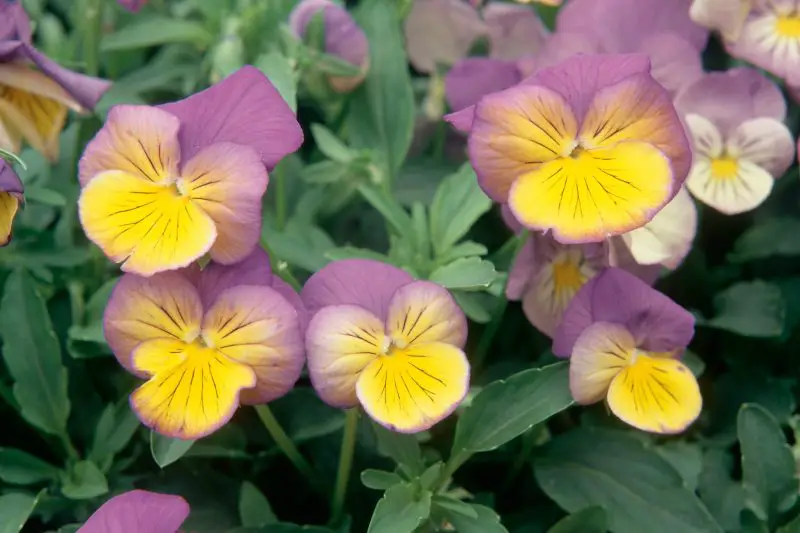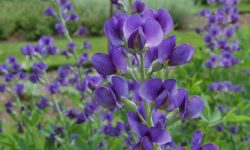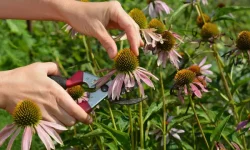Knowing when to grow pansies can make the difference between a short-lived display and months of continuous color. These beloved cool-weather flowers thrive when temperatures are mild, adding vibrant hues to gardens, containers, and borders just as many plants begin to fade. But perfect timing is crucial. Planting too early may expose pansies to lingering heat, while planting too late can prevent their roots from establishing before frost sets in, limiting their ability to bloom fully.
By understanding the best time to plant, you can keep your pansies thriving from early spring through late fall, or even through mild winters in warmer regions. Knowing when to grow pansies allows gardeners to plan ahead for vibrant, healthy plants that produce waves of cheerful blooms. With the right timing and care, these charming flowers will transform your garden into a lasting masterpiece of seasonal beauty.
Understanding Pansy Growth and Blooming Cycle

To truly master the art of growing pansies, you must first understand their unique growth and blooming cycle. Pansies are cool-season annuals or short-lived perennials that perform best when daytime temperatures range between 45°F and 65°F. Their life begins as small seeds that prefer cool, moist soil for germination. Under ideal conditions, they sprout within one to two weeks, developing small rounded leaves known as cotyledons. As they mature, pansies grow compact rosettes of deep green foliage while establishing a strong root system that will later support continuous blooms. This vegetative phase is crucial because healthy roots directly influence the plant’s ability to produce abundant flowers later on.
Once pansies settle into cooler weather, they transition into their blooming phase. Temperature and daylight hours play the most important roles in determining how long and how often pansies flower. When the weather is mild and the days are bright but not hot, the plants burst into full bloom, displaying an array of striking colors. In northern or cooler regions, pansies are typically planted in early spring for blooms that last until early summer. In southern or warmer areas, gardeners often plant them in fall so they bloom beautifully through winter and into spring. Their adaptability to different climates makes them a favorite among gardeners seeking lasting seasonal color.
As temperatures rise above 70°F or drop below freezing for long periods, pansies begin to slow down. They may enter a dormant state or fade completely, depending on local conditions. Regular deadheading and consistent watering can help prolong flowering before this resting phase begins. Understanding this cycle allows you to time your planting perfectly—ensuring your pansies reach their peak just as the weather aligns with their natural rhythm. By following this pattern, you can enjoy wave after wave of brilliant color throughout the cooler months.
Best Time to Grow Pansies in Different Climates
Knowing when to grow pansies depends largely on your local climate, as these resilient flowers thrive in cool conditions and struggle in heat. In regions with mild winters, such as the southern United States, coastal California, or the Pacific Northwest, fall planting is ideal. Sowing or transplanting pansies in early to mid-fall allows them to establish strong roots before winter sets in. As temperatures cool, they settle comfortably into the soil and often bloom continuously through the colder months, then revive with even greater intensity in early spring. This extended blooming period is one of the biggest advantages of fall planting in these temperate regions.
In colder climates, such as the Midwest and Northeast, planting pansies too early can expose them to frost damage. Gardeners in these areas should start seeds indoors about 8 to 10 weeks before the last expected frost, usually in late winter. Transplant them outside once the soil is workable and daytime temperatures hover between 45°F and 65°F (7°C to 18°C). Spring-planted pansies in cooler zones will typically bloom from late spring through early summer, bringing cheerful color just as other flowers are beginning to emerge.
Meanwhile, in warmer climates like the Deep South or Southwest, pansies are grown as cool-season annuals. The best time to plant is from late fall through early spring before the summer heat becomes too intense. During these months, pansies thrive in gentle sunlight and cool breezes, producing vivid blooms that brighten landscapes when most plants are dormant. By aligning your planting schedule with your region’s temperature patterns, you’ll enjoy healthier plants and longer-lasting displays of vibrant pansy flowers throughout the season.
Temperature is one of the most crucial factors influencing how well pansies grow, bloom, and maintain their vivid color. These resilient cool-weather plants thrive best when daytime temperatures stay between 45°F and 65°F (7°C to 18°C). Within this range, pansies flourish with dense green foliage and continuous, large blossoms. Their growth slows when the temperature rises above 70°F (21°C), and once it exceeds 75°F (24°C), heat stress begins to appear. Flowers start to shrink in size, colors fade, and stems may become weak. Extended exposure to heat can even cause pansies to go dormant as they conserve energy for survival rather than flowering.
On the other hand, pansies are surprisingly cold-tolerant. They can survive brief frosts and even light snow, making them a perfect choice for early spring or late fall gardens. In mild winter climates, pansies may continue blooming throughout the colder months, offering cheerful colors when most plants have faded. When the temperature drops below freezing, a protective layer of mulch around their roots helps shield them from frost damage. Regular watering during dry, cold spells also strengthens their resistance to harsh weather, ensuring healthy roots and vibrant growth once the temperature rises again.
For gardeners who want long-lasting displays, understanding local temperature patterns is key. Planting too early in fall can expose young pansies to sudden frosts, while waiting too long in spring risks heat damage. Providing partial shade in warmer areas and ensuring proper soil insulation in cooler zones helps maintain a steady growth rhythm. By carefully adjusting to your climate’s seasonal fluctuations, you can enjoy radiant pansy blooms that thrive from the crisp air of autumn to the gentle warmth of spring.
Best Seasons to Plant Pansies for Optimal Blooms
Planting Pansies in Spring
Spring planting is perfect for gardeners who crave early bursts of color after a long, dull winter. Once the soil starts to thaw and daytime temperatures stay between 45°F and 60°F (7°C to 15°C), pansies thrive. They awaken quickly, sending out lush leaves and vibrant flowers that brighten any garden bed. Planting early allows the roots to establish before summer heat arrives, ensuring strong growth and a longer blooming period. Spring pansies often bring the first true signs of life to gardens, filling containers, borders, and pathways with cheerful hues.
To achieve the best results, use rich, well-draining soil mixed with compost to support strong root development. Keep the soil consistently moist but never soggy. A light, balanced fertilizer every few weeks enhances bloom production and color intensity. As the season warms, provide partial shade to protect flowers from excessive heat and wilting. Deadheading spent blossoms regularly encourages more buds and prevents the plant from going to seed too soon. When cared for properly, spring-planted pansies can bloom continuously from March to early June, offering a radiant display that bridges the gap between winter chill and summer warmth.
Planting Pansies in Fall
Fall is often the most reliable time to plant pansies for gardeners in temperate or southern regions. The cooler weather helps the plants settle in comfortably, allowing their roots to grow deeply before the arrival of winter. When planted in early to mid-fall, pansies develop strong foundations that enable them to endure frost and even light snow. Their growth slows but rarely stops completely, and many varieties continue to bloom sporadically through mild winters. This resilience makes them a stunning choice for filling garden beds when most flowers have already faded.
To maximize fall growth, plant pansies about six to eight weeks before the first expected frost. The soil retains warmth while the air cools, creating perfect conditions for establishment. Mulching around the base protects roots from freezing and conserves moisture. Choose hardy varieties known for winter endurance to enjoy long-lasting color through spring. In mild climates, fall pansies can bloom nonstop from October until May, making them one of the most rewarding cool-season flowers for gardeners seeking steady color and charm across seasons.
Planting Pansies in Winter
Planting pansies in winter can be surprisingly successful when done in the right climate. In regions with mild winters, such as the southern United States or coastal areas, pansies thrive even during the coldest months. Cool daytime temperatures between 40°F and 60°F (4°C to 15°C) are ideal for steady growth and flowering. Because pansies prefer cool conditions, winter planting allows them to bloom brightly while other plants remain dormant. Gardeners often use them to add instant color to winter landscapes, filling window boxes, containers, and borders with lively blossoms when the garden needs it most.
To plant pansies in winter, it’s important to prepare the soil properly. Loose, well-draining soil enriched with compost helps prevent root rot caused by excess moisture. Plant on days when the ground isn’t frozen, and water lightly after planting to help roots settle. Applying a layer of organic mulch, such as straw or shredded bark, insulates the soil and maintains consistent temperature levels. During occasional freezes, covering the plants overnight with frost cloth protects delicate flowers. With proper attention, winter-planted pansies will survive the season, rejuvenate quickly in early spring, and continue blooming into late May. This planting approach ensures vibrant, long-lasting color when few other flowers can endure the chill.
Regional Timing Tips for Growing Pansies
Growing Pansies in Northern Climates
In northern regions, where winters are long and cold, pansies are best planted in early spring once the soil is workable. Gardeners should wait until temperatures remain consistently above freezing but before the heat of summer arrives. Planting too early can expose young pansies to frost damage, while waiting too long risks premature wilting when warm weather sets in. Early April to mid-May is generally the ideal window for northern gardeners. During this period, pansies take advantage of cool days and moist soil, developing strong roots that support weeks of steady bloom.
Pansies grown in northern climates thrive in full sun, but partial shade helps them last longer as temperatures rise. Mulching around the base conserves soil moisture and keeps roots cool during unexpected warm spells. For those wanting fall color, late August to early September planting also works well if frost holds off. These pansies bloom through early winter and may return when spring arrives. With proper timing and a little weather monitoring, northern gardeners can enjoy two distinct pansy seasons—one in spring and another as fall gives way to frost.
Growing Pansies in Southern Climates
In southern climates, where summers are hot and winters are mild, fall planting is the secret to success. Pansies dislike heat but adore cool air, so late September to early November is the best time to start. The soil is still warm enough for quick root establishment, while cooler evenings encourage vigorous flowering. When planted in fall, pansies thrive through winter and deliver vivid blooms until late spring, far outlasting many other seasonal flowers. They add bright color to gardens and containers during the months when few plants can handle the temperature swings.
Southern gardeners should choose heat-tolerant and disease-resistant varieties for better performance. Providing partial shade during warmer winter afternoons helps prevent stress and extends bloom life. Regular deadheading and feeding every few weeks keep flowers lush and healthy. Mulching also protects roots from sudden cold snaps and retains soil moisture. With this strategy, pansies in the South become a long-lasting floral display, bridging the gap between autumn’s fading beauty and the arrival of spring’s full bloom.
Growing Pansies in Coastal and Mild Regions
Coastal and mild regions offer some of the most favorable conditions for growing pansies year-round. The consistent temperatures, moderate humidity, and gentle winters in these areas allow gardeners to plant almost anytime between fall and early spring. Pansies flourish when daytime temperatures range between 45°F and 65°F (7°C to 18°C), which is typical of coastal climates. Gardeners often take advantage of this mild weather to enjoy a continuous cycle of color, replanting or refreshing pansy beds every few months. Because frost is rare, pansies can bloom almost uninterrupted, bringing steady brightness to gardens, balconies, and window boxes.
To maintain healthy plants, coastal gardeners should pay attention to soil drainage and salt exposure. Coastal soils can sometimes be sandy or saline, which may weaken pansies if not corrected. Mixing in compost and organic matter helps improve fertility and water retention. Watering with fresh, non-saline water ensures that minerals do not accumulate in the soil. Regular feeding with a gentle, water-soluble fertilizer keeps pansies vibrant and productive. Even though these regions experience mild winters, occasional wind or storms may damage blooms, so placing pansies in sheltered spots or using windbreaks helps preserve their beauty. With these precautions, pansies reward coastal gardeners with lush growth and a rainbow of colors throughout much of the year.
Daylight and Shade Requirements for Healthy Pansies
Light plays a vital role in how well pansies grow, flower, and maintain their vivid color. These cool-weather plants love bright light but not excessive heat, which means the best growing conditions often depend on the balance between sunlight and shade. In early spring and fall, pansies thrive in full sun because temperatures are mild, and direct light helps them produce strong stems and large blooms. However, in late spring or warmer climates, full sun can stress the plants, causing flowers to fade quickly and leaves to wilt. Providing light shade during the hottest part of the day helps maintain their color and vigor longer.
Pansies grown in partial shade often produce fewer flowers but last much longer, especially in areas with intense sun exposure. Morning light combined with afternoon shade usually delivers the best results, allowing the plants to photosynthesize efficiently without overheating. When planted near walls or under taller plants, pansies benefit from filtered light that mimics their natural cool-weather environment. For container gardeners, placing pots in bright but indirect light extends bloom time significantly. Understanding the right light balance for your location ensures healthier plants and more continuous flowering throughout the growing season.
Consistency is key when it comes to lighting conditions. Moving pansies frequently between full sun and heavy shade can stress the plants, reducing their ability to adapt. Monitoring how your pansies respond to different levels of sunlight helps determine the perfect spot for optimal growth. By observing leaf color, bloom size, and overall health, you can fine-tune their placement to achieve the ideal balance between brightness and protection. This careful attention ensures that your pansies continue to thrive and bloom beautifully from one season to the next.
Soil Preparation and Planting Conditions
Healthy, vibrant pansies begin with the right soil. These cool-season flowers thrive in rich, well-draining soil that retains just enough moisture to stay consistently damp but never soggy. The ideal soil pH ranges from 5.8 to 6.2, slightly acidic, allowing pansies to absorb nutrients efficiently. Before planting, loosen the soil to a depth of about 8 to 10 inches to promote good root development. Mixing in compost or well-rotted manure improves soil texture and enriches it with essential organic matter. This creates the perfect balance of aeration, fertility, and drainage—three key factors for vigorous growth and long-lasting blooms.
Soil temperature also plays an important role in successful planting. Pansies prefer cool soil, typically between 45°F and 60°F (7°C to 15°C), which encourages steady root growth without stress. When soil becomes too warm or dry, roots struggle to establish, leading to weak plants and poor flowering. Gardeners in warm regions can help regulate temperature by adding a layer of mulch after planting. Mulch not only insulates the soil but also retains moisture and prevents weeds that compete for nutrients. With this preparation, pansies quickly adapt and start producing strong foliage and buds within weeks.
Proper planting technique ensures pansies settle in well. Space each plant about 6 to 8 inches apart to allow airflow and reduce the risk of fungal diseases. Water deeply after planting to help roots make contact with the surrounding soil, then maintain consistent moisture levels throughout the growing season. Avoid overwatering, as standing water can cause root rot. Regularly checking soil condition ensures it remains loose, cool, and fertile—an environment where pansies can thrive from planting through their entire blooming cycle.
Caring for Pansies After Planting
Once pansies are planted, consistent care ensures they stay vibrant and continue to bloom for many months. Watering is the first priority, as pansies need evenly moist soil to thrive. Dry soil quickly stresses the plants, leading to drooping flowers and yellowing leaves. However, overwatering can cause root rot, so it’s important to let the top inch of soil dry slightly between waterings. Morning watering is best since it allows leaves to dry by evening, reducing the risk of fungal diseases. In cooler months, pansies may need watering only once or twice a week, while warmer conditions require more frequent attention.
Fertilizing helps pansies maintain their energy for constant blooming. A balanced, water-soluble fertilizer with equal parts nitrogen, phosphorus, and potassium works well. Feeding every two to three weeks keeps the plants lush and colorful. Too much nitrogen can encourage leaf growth at the expense of flowers, so moderation is key. For gardeners using organic methods, compost tea or diluted fish emulsion provides gentle nourishment. Consistent feeding ensures the plants remain strong and resilient, especially during periods of temperature fluctuation or heavy rainfall.
Regular maintenance extends the life of your pansy display. Removing faded flowers, known as deadheading, encourages new blooms and prevents the plant from setting seed. Pinching back leggy stems helps maintain a compact shape and stimulates new growth from the base. In regions with fluctuating temperatures, applying a thin layer of mulch helps stabilize soil conditions and protect roots. By maintaining a steady care routine, pansies continue to bloom prolifically, offering color and freshness from one season to the next with minimal effort.
Common Mistakes to Avoid When Growing Pansies
Overwatering and Poor Drainage
One of the most common mistakes gardeners make with pansies is overwatering. While pansies enjoy consistent moisture, they cannot tolerate waterlogged soil. Excess water suffocates roots, causing them to rot and limiting their ability to absorb nutrients. This results in drooping leaves, yellowing foliage, and stunted growth. Many gardeners misinterpret these symptoms as drought stress and add even more water, worsening the problem. Pansies prefer soil that drains freely but retains slight dampness. Planting them in heavy clay or compacted soil without proper drainage can quickly lead to root rot, especially during rainy periods.
To avoid this issue, always check the soil before watering. If the top inch feels dry, it’s time to water; if it’s still damp, wait another day. Amending the planting area with compost or perlite enhances drainage and prevents standing water around the roots. Raised garden beds or containers with drainage holes are excellent solutions in wetter climates. Keeping moisture levels balanced helps pansies grow stronger and produce steady, healthy blooms without risk of root damage.
Planting in the Wrong Season
Timing plays a crucial role in pansy success. Many gardeners make the mistake of planting too early in spring or too late in fall, exposing young plants to harsh conditions. When planted too soon in spring, pansies may face unexpected frosts that damage new growth. Conversely, late fall planting can prevent roots from establishing before freezing temperatures arrive. Both scenarios weaken the plants, reducing their ability to bloom fully. Ideal planting time varies by region, but generally, pansies perform best when daytime temperatures stay between 45°F and 65°F (7°C to 18°C).
To ensure success, observe local weather trends and plant during stable, cool conditions. In warmer regions, fall planting gives pansies a head start for long-lasting winter and spring color. In colder areas, early spring planting works best once frost risk has passed. Planting at the right time allows roots to develop properly, giving pansies the strength to endure seasonal changes and produce abundant blooms.
Neglecting Sunlight Balance
Many gardeners underestimate how much light pansies need to thrive. While these flowers are known for tolerating cool weather, they still require sufficient sunlight to bloom vigorously. Planting pansies in deep shade often results in weak stems, pale leaves, and few flowers. Without at least four to six hours of direct sunlight daily, the plants struggle to produce the energy needed for strong growth. Conversely, too much intense sunlight—especially in warmer regions—can scorch leaves, fade flower color, and shorten the blooming period. Finding the right balance between sun and shade is essential for maintaining vibrant, long-lasting pansy displays.
To achieve optimal lighting, place pansies in areas with morning sun and light afternoon shade. This combination encourages steady photosynthesis while protecting the plants from excessive heat. In cooler climates, full sun exposure helps pansies flourish throughout spring and fall. For container-grown pansies, move pots as needed to ensure proper light distribution. Observing the plants’ response to light conditions and adjusting placement accordingly can make a remarkable difference in both bloom quality and longevity. With the right sunlight balance, pansies reward gardeners with fuller, healthier growth and weeks of continuous color.
Skipping Deadheading and Maintenance
Another frequent mistake is neglecting regular maintenance, particularly deadheading. When faded flowers are left on the plant, pansies begin to produce seeds instead of new blooms. This shift in energy reduces flowering and makes the plant appear tired. Over time, pansies that are not deadheaded become leggy and lose their compact, attractive shape. Regular removal of spent flowers keeps the plant focused on producing new buds and vibrant color. It also prevents fungal issues by improving air circulation and keeping the foliage dry.
Deadheading is simple yet highly effective. Pinch off old blooms just above a healthy leaf node or bud using your fingers or clean garden shears. Inspect plants weekly for damaged leaves, pests, or signs of disease. Occasional trimming of overgrown stems helps maintain symmetry and encourages fresh growth from the base. Taking a few minutes each week to perform these small tasks keeps pansies looking lively and blooming longer. Consistent maintenance not only enhances their appearance but also extends their lifespan well beyond the typical season.
Extending the Blooming Season of Pansies
Extending the blooming season of pansies requires consistent care and attention to their specific needs. One of the most effective strategies is regular deadheading, which involves removing spent flowers before they develop seeds. This simple practice redirects the plant’s energy toward producing new blooms rather than seed formation. Deadheading also improves airflow around the foliage, reducing the risk of fungal infections. Gardeners should perform this task at least once a week, but more frequent attention during peak blooming periods can result in nearly continuous color and fuller, more compact plants that enhance any garden display.
In addition to deadheading, proper fertilization plays a key role in prolonging flowering. Pansies benefit from a balanced, water-soluble fertilizer with equal parts nitrogen, phosphorus, and potassium, applied every two to three weeks. Too much nitrogen, however, can promote excessive leaf growth at the expense of flowers. Incorporating organic matter such as compost or well-rotted manure into the soil improves nutrient availability and moisture retention, supporting steady growth. Maintaining slightly moist, well-draining soil ensures roots remain healthy and encourages continuous bud formation throughout the season.
Other cultural practices also help extend pansy blooms. Providing adequate sunlight and partial shade during warmer periods prevents heat stress, which can shorten flowering. Pinching back leggy stems encourages bushier growth and stimulates new buds. Mulching around the base helps regulate soil temperature, conserve moisture, and reduce weed competition. By combining these strategies—deadheading, proper fertilization, soil care, and attentive maintenance—gardeners can enjoy vibrant pansy displays for months. When executed consistently, these practices ensure pansies remain healthy, resilient, and flowering beautifully from early spring through late fall.
Pest and Disease Management for Pansies
Pansies are generally hardy, but they are not immune to pests and diseases. Common pests include aphids, slugs, snails, and spider mites. Aphids feed on the sap of young leaves and buds, causing curling and distorted growth, while slugs and snails can chew holes in leaves and flowers, damaging the plant’s appearance. Spider mites thrive in dry, warm conditions, leaving fine webbing on foliage and yellowing leaves. Regular inspection of plants helps detect these pests early. Using insecticidal soap or neem oil can effectively control infestations, while physical removal of slugs and snails can prevent widespread damage.
Diseases can also affect pansies if conditions are not ideal. Fungal infections such as powdery mildew, downy mildew, and root rot occur when humidity is high or soil drainage is poor. Powdery mildew appears as a white, powdery coating on leaves, while downy mildew causes yellowing and wilting. Root rot develops in waterlogged soil, leading to stunted growth and plant death. Preventing disease involves ensuring proper spacing for air circulation, planting in well-drained soil, and avoiding overhead watering, which keeps leaves wet. Removing infected foliage promptly and applying fungicides when necessary can limit the spread of disease.
Environmental stress, such as extreme temperatures or prolonged wet conditions, can make pansies more susceptible to pests and diseases. Maintaining healthy plants through proper watering, soil care, and fertilization strengthens their natural defenses. Companion planting with pest-repellent plants like marigolds can also reduce infestations. By combining vigilant monitoring, preventive care, and timely intervention, gardeners can keep pansies healthy and vibrant throughout the season, ensuring a long-lasting display of beautiful blooms.
Frequently Asked Questions About Growing Pansies
What is the best time to plant pansies?
The best time to plant pansies depends on your climate. In cooler northern regions, early spring after the last frost is ideal. In southern or mild climates, fall planting allows pansies to establish roots and bloom through winter. Proper timing ensures strong growth and a longer flowering period.
How often should I water pansies?
Pansies need consistently moist soil but should never sit in waterlogged conditions. Water deeply when the top inch of soil feels dry, usually once or twice a week in cool weather. Adjust frequency during hotter or drier periods to prevent stress and maintain healthy growth.
Do pansies need full sun or partial shade?
Pansies thrive with at least four to six hours of sunlight daily. Morning sun with afternoon shade works best in warmer regions, while full sun is suitable in cooler climates. Proper light exposure ensures robust blooms and strong foliage without heat stress.
How can I extend the blooming season of pansies?
To prolong flowering, regularly deadhead spent blooms and pinch back leggy stems. Use balanced fertilizer every few weeks and maintain consistent soil moisture. Mulching helps regulate temperature and retain water, supporting steady growth and vibrant blooms for months.
What are common pests and diseases affecting pansies?
Aphids, slugs, snails, and spider mites are common pests. Powdery mildew, downy mildew, and root rot are frequent diseases. Prevent infestations with proper spacing, good drainage, vigilant monitoring, and timely treatments like insecticidal soap or fungicides when necessary.
Conclusion
Successfully growing pansies requires careful attention to timing, climate, and ongoing care. By planting at the right season, providing balanced sunlight, and maintaining well-drained, nutrient-rich soil, gardeners can enjoy vibrant, long-lasting blooms. Regular deadheading, proper watering, and preventive pest and disease management further ensure plants remain healthy and productive. Understanding regional differences and responding to environmental conditions helps pansies thrive in any garden. With consistent care and thoughtful planning, these resilient, colorful flowers bring continuous charm, brightening landscapes and containers from early spring through late fall, creating a truly stunning and enduring display.






